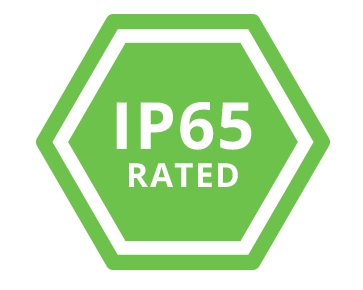LEDs are widely used for lighting and displays either indoors or outdoors. Since the application scenarios change a lot, it’s important that LEDs have a good protection to perform well and last for long time operation in different environment. Among various protection features, IP rating is for sure a crucial one that decides where we can use a specific type of LEDs. So what are LED IP ratings? How do affect the usage of LEDs? Let’s proceed to unveil the mystery of LED IP ratings.

IP stands for ingress protection. It’s a way to describe the performance of a device, or a gadget to protect against the ingress of solid objects and liquids.
IP ratings are the different levels that we define the performance of a device, or a gadget. IP ratings usually include two numbers, such as the commonly seen IP68, which depicts the highest level of IP rating.
The first number varies from 0 to 6, which means the level of protection against solids.
The second number comes between 0 to 8, which means the level of protection against liquids or moisture.
Of course, the higher the number is, the better protection level.
Different IP rating numbers have different meanings.
The first number for solid ingress protection:
0 – no protection against solid
1 – protection against solid object larger than 50mm
2 – protection against solid object larger than 12.5mm
3 – protection against solid object larger than 2.5mm
4 – protection against solid object larger than 1.0mm
5 – protection against dust affecting the performance or operation of the device
6 – no dust ingress at all
The second number for liquid ingress protection:
0 – no protection against liquid
1 – protection against water drops
2 – protection against water drops at 15 degree angle
3 – protection against water spray at 60 degree angle
4 – protection against water splashing from any angle
5 – protection against water jet from any angle
6 – protection against strong water jet from any angle
7 – protection against temporary submersion in water (30 minutes 3 feet)
8 – protection against permanent submersion in water (up to 13 feet)

Kinglight provides various LEDs for both indoors and outdoors
LED displays, particularly outdoor and commercial displays, often have specific IP ratings to ensure their durability and protection against environmental elements. Here are some common IP ratings you may encounter for LED displays:
IP65: This rating is commonly found in outdoor LED displays. It provides protection against solid objects greater than 1mm in size and offers protection against low-pressure water jets from any direction. IP65-rated LED displays are designed to withstand rain, dust, and other outdoor conditions.
IP66: This rating indicates a high level of protection against dust and water. It offers the same level of protection against solid objects as IP65 (greater than 1mm), but it provides additional protection against powerful water jets from any direction. IP66-rated LED displays are suitable for locations that may experience heavy rain or frequent water exposure.
IP67: LED displays with an IP67 rating are highly resistant to dust and can withstand temporary immersion in water up to a depth of 1 meter for a limited time. They offer the same level of solid object protection as IP65 and IP66 (greater than 1mm). IP67-rated displays are commonly used in outdoor applications where they may be exposed to harsh weather conditions or accidental water submersion.
IP68: This is the highest level of protection against dust and water ingress for LED displays. IP68-rated displays are fully dust-tight and can be continuously immersed in water beyond 1 meter for extended periods. They provide the most robust protection and are suitable for extremely demanding environments or applications where the displays need to be submerged, such as underwater signage or displays used in swimming pools.
Though IP ratings decides where we can use an LED display, other factors such as proper installation, maintenance, and the overall quality of the display will also impact its performance and longevity in various environments.